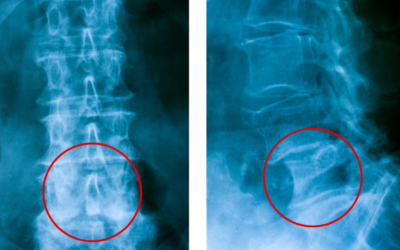What is Mouse Shoulder?
A mouse shoulder is induced by using the mouse for long periods with poor ergonomics or improper arm or wrist support. If you work in an office, you probably spend hours every day using the mouse, clicking and dragging items.
As a general rule, Mouse Shoulder is a painful condition that occurs after spending a long period sitting at a desk with the arm outstretched to use a computer mouse. RSIs such as ‘Mouse Shoulder’ can ultimately lead to rotator cuff tendinitis, characterized by swollen, inflamed tissues in the tendon that connects your arm to your body.
The pain from repetitive strain injury or work-related upper limb disorder can be relieved with a few changes to the computer desk set-up. One of these adjustments is using ergonomic chairs and desks that allow for frequent posture changes. Another good adjustment would be to replace your keyboard tray at eye-level height, so you don’t have as much pressure on your shoulders when typing away in front of the screen all day long.
All Day Comfort & Support
Mouse Shoulder typically occurs when you are constantly reaching your mouse if it’s too low or too high. Too high, and you are continually tensing the muscles in your arm, shoulder and neck, which causes muscle imbalance. Repetitive Strain Disorder (RSI) occurs as a result and appears with the mouse shoulder.
Why Do I Have a Wrist or Mouse Shoulder?
When you sit with your mouse on the left side of your body, it puts a strain on the muscles in one arm. The shoulder and shoulder blade attach to the ribcage by various muscles that insert into the spine, neck, and base of the skull, supporting weight when arms are outstretched. Holding this pose for hours or years without variation may lead to pain due to excessive use on just one side as these muscle contracts tightens over time from holding up an arm unsupported while trying not to let others go limp!
What Does it Feel Like?
The following symptoms may be associated with Mouse Shoulder:
- A pain is extending throughout the arm, all the way to your hands.
- Headaches can also come after prolonged use of a mouse as well.
- Tightness stemming from your upper back or shoulders often accompanies this discomfort, too. It is not uncommon for people to experience numbness or tingling in their hands when using a computer mouse on an extended basis either.
All Day Comfort & Support
How is it Treated?
We need to fix our workstations and practice healthy posture habits in the first place to prevent Mouse shoulders. With no changes to work posture or lifestyle, these symptoms will return within days or weeks, putting your health at risk of becoming dependent on perpetual long-term treatment. Saying this, Mouse Shoulder responds well to chiropractic care, Class 4 cold laser therapy, and Trans Frictional Massage (TFM) therapy.
How to Treat or Prevent Mouse Shoulder?
Use your left hand. I know this sounds crazy, but you can use both hands. Learning to use your mouse with both hands will make you more ambidextrous, a great skill for the modern professional. Imagine how much easier it would be if you had an injury and needed to switch sides to work! It may take some time at first, but soon enough, you’ll feel like a pro who can do everything proficiently from either side of your body.
All Day Comfort & Support
Change your mouse. The best ergonomic mouse for shoulder pain should be designed to use the whole arm. The shoulder region is the most common area of discomfort affecting computer users. Many modern mouse designs encourage or force you to move your arm, leading to excessive strain on muscles in that same region and causing significant irritation over time.
Keep moving! Get up, and move about every 15-20 minutes. Yes, you can avoid shoulder pain by getting out of your chair and taking a walk around the office. If you’re able to do so – rather than emailing or phoning someone else in your office – try going over there yourself for an old-fashioned face-to-face chat.
Avoid repetitious movements. One of the most important things to remember about Repetitive Strain Injuries is adding variety. Keep a close eye on your mouse and change it up every week or so, for an hour at first then gradually intensify over time as you feel more comfortable with different styles.
Schedule stretches and exercises into your day. When you’re working long hours, it’s easy to forget about doing any physical activity. To avoid the pain of a sore neck and shoulders from sitting in front of your computer all day, make sure that every few hours during the workday, take some time out for stretches or a 15-minute walk around the block.
How to Sleep With Shoulder Pain
If you have any form of shoulder pain, especially Mouse Shoulder, you can sleep in the following positions to avoid more pain:. Sleep on your back or side rather than your stomach whenever possible. Use pillows under your neck and knees when you are sleeping on your back. Side sleepers should have pillows between their knees and bed for proper spinal alignment. The top leg should be in line with the bottom leg, with both knees bent. In other words, they should sleep as if they are standing tall with a straight spine and slightly bent knees.
Black Friday: 35% Off Today
Typical Delivery 1-3 Days
If you’re truly invested in upgrading your sleep, l would always recommend obtaining a well-designed natural latex mattress and pillow! It is the best investment you can make in terms of a restful night’s sleep and full recovery. Here are my tips on getting a good night’s rest:
- Stick to a routine. Working from home and being socially isolated can lead to overdosing on Netflix. However, late nights lead to late mornings and a habit develops..
- Set a bedtime routine that involves at least one hour away from screens before going to sleep. This can be as simple as taking a walk in the garden, planning the next day, or simply reading a book.
- Keep the phone outside the door if you need an alarm. Do not check it during the night if you do wake up. Nothing will change that much tonight.
- Darken your room and keep it slightly cool.
- Stay away from caffeine in the afternoon, eat early in the evening, and try to keep alcohol consumption to a minimum. All these may interfere with your ability to sleep soundly.
- The best way to avoid being awake for hours is by concentrating on breathing and avoiding your mind racing. You might be able to return to sleep this way quickly.
- Try sleeping on your back (as long as you don’t snore!) to keep your shoulders in alignment.
- Sleep on the side opposite of the sore shoulder. If you still have pain, place a pillow or towel under the affected arm.
What Does It Mean if Your Right Shoulder Hurts?
A person may experience pain in his/her right shoulder and arm for several reasons. In many cases, the pain results from muscle overload or injury. It may also result from damage to the nerves in the area. The following are some causes of right shoulder pain:
Repetitive Strain Injury (RSI). Work-related upper limb disease is also called work-related upper limb pain or repetitive strain injury (RSI).
Rotator Cuff Tendonitis. You can develop this condition by sitting on your shoulder repeatedly over a long time, sleeping on your shoulder, or lifting your arm over your head.
Atrophy. Muscles, Ligaments, Bones: Even after a short period of inactivity, the muscles shrivel and stiffen.
Brachial neuritis. Inflammation of the brachial plexus causes severe shoulder pain, particularly if the brachial plexus runs through the neck and upper back.
Gall Bladder Problem. An acute attack of cholecystitis causes severe abdominal pain, usually in the upper right side or upper middle part of the abdomen. The pain may be sharp and/or dull, radiating to the right shoulder often.
If you think that you have any of these conditions, it is always a good idea to get a proper diagnosis from your health specialist.










